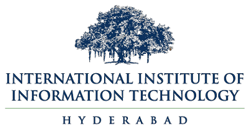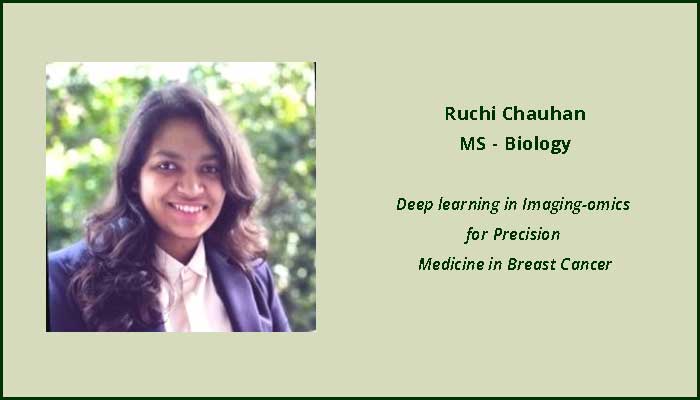August 2022
Ruchi Chauhan received her MS in Biology. Her research work was supervised by Dr. P K Vinod. Here’s a summary of her research work on Deep learning in Imaging-omics for Precision Medicine in Breast Cancer:
Cancer is becoming a leading cause of death due to increased life expectancy and lifestyle changes. With the evolving understanding of the complexities of the disease, oncologists and researchers attempt to determine the treatment and prevention strategies effective for specific groups of people. This approach, called precision medicine, requires redefining the practices throughout the different stages of cancer care, including accurate diagnosis and prognosis.
The tissue specimens from the tumor are viewed on glass slides under the microscope by the pathologists for visual interpretation of cellular biology. This examination, known as histopathology, is the gold standard for cancer diagnosis. The slides can be digitalized as high-resolution images, called Whole Slide Images. Computer vision algorithms on these images can automate routine pathology tasks.
While histopathology enables clinicians to detect and monitor tumors to make precise decisions on therapies, cancer is primarily a disease of the genome. Individual tumors harbor thousands of point mutations. Genomic data helps to understand the genetic mechanisms of cancers. With the high-throughput genotyping becoming increasingly affordable, thousands of individuals worldwide are undergoing genomic sequencing. Genome profiling of tumor cells has led to better categorizing cancers, discovering previously unknown subtypes and sub-classifications. On the other hand, studies have revealed unexpected genetic similarities across different types of tumors.
Precise and extensive characterization of tumors is the basis of precision medicine. A proper understanding of its subtype, stage, and course of progression guides the therapy decisions. Making efficient use of data observed at different scales gives a more comprehensive picture of complex diseases such as cancer. Genome profiles combined with high-resolution imaging techniques provide fine-grained measures to provide intra, inter, and peri-tumor information. Imaging-omics is an emerging field as a novel method of associating imaging features with genomic data.
This thesis presents two works on accurate diagnosis and prognosis of breast cancer. The first work explores the association between genomic biomarkers and histopathology images. The second work uses multiple modalities – gene expression, clinical parameters, and images for cancer prognostication.
Finally, the challenges and prospects of the field of imaging-omics are discussed. Through these works, we demonstrate that the histopathology images are predictive of genomic biomarkers such as mutations, hormone receptor status, and molecular subtypes. Also, the integration of multiple modalities gives a much better prediction of survival. Further insights are presented in terms of the contributing features for diagnosis and prognosis.

